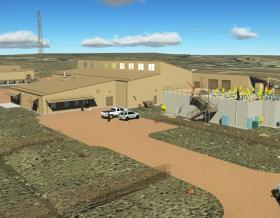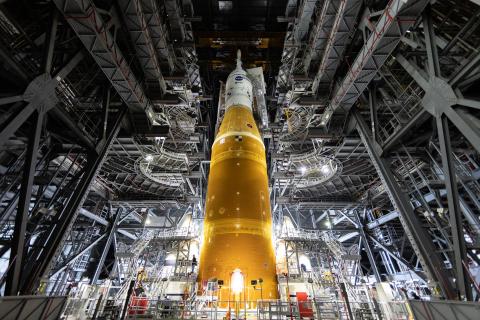
-
What is the Artemis Program?
Artemis is NASA’s deep space human exploration program which aims to land the first woman and the first person of color on the moon and establish sustainable exploration in preparation for missions to Mars. Artemis I, an uncrewed flight test of NASA’s Space Launch System (SLS) rocket and Orion spacecraft as an integrated system, is the first phase for humanity's return to the lunar surface, setting off a series of increasingly more complex crewed missions to the moon with Artemis II and Artemis III.
-
Why are we going to the moon?
The moon is a natural stepping stone to Mars. We will demonstrate new technologies, capabilities and business approaches needed for exploration farther into the solar system, including Mars. On the lunar surface, we will pursue water from ice and other natural resources to further our journey.
-
How are we getting to the moon?
The Artemis missions will be launched on NASA’s Orion spacecraft capsule atop the SLS rocket, with system assembly, integration and test by Jacobs through our TOSC contract with the Exploration Ground Systems (EGS) Program.
Making Artemis a reality

Exploration Ground Systems
As the Artemis prime contractor at Kennedy Space Center (KSC) for NASA's Exploration Ground Systems (EGS) Program, Jacobs is responsible for receiving all SLS and Orion flight hardware, assembling and integrating all the components, conducting final test and checkout, transporting the vehicle to the pad, helping to launch it on the mission, and then recovery.
Jacobs is also supporting the SLS and Orion spacecraft development through our contracts at Marshall Space Flight Center, Johnson Space Center, Langley Research Center and the Glenn Research Center, as well as project support at Stennis Space Center and Michoud Assembly Facility.
The Jacobs team has helped NASA to modernize and upgrade facilities and ground equipment at KSC to prepare for the launch of the SLS and Orion crew vehicle in support of the Artemis Program. This includes supporting the upgrades to the Vehicle Assembly Building, refurbishing the Crawler Transporter 2 and modifications at Launch Pad 39B.
Orion Crew Vehicle Safety Systems and Life Support
52d2.jpg?itok=ZgqeFQtZ)
We're helping to ensure Orion is as safe as possible from launch to re-entry and through to splashdown. Our team fully developed and tested the Orion re-entry parachutes system that will slow down the capsule from more than 26,000 mph to less than 25 mph. We successfully performed numerous tests around technical condition scenarios and fully certified the system for approved use on NASA’s Orion crew vehicle.
For NASA’s launch abort system project, we worked across five NASA centers to help develop and successfully test the reliability of the abort system for Orion.
Space Launch System Development

Jacobs is providing technical leadership and support to NASA’s Space Launch System Program in the areas of vehicle systems engineering and integration; flight software development; avionics systems integration; lab construction and operation; vehicle structural load development; structural, propulsion and acoustic testing; and design, development and analysis.
At Marshall Space Flight Center, Jacobs support includes construction and operation of the SLS flight software/hardware integration and test facility, the Systems Integration Lab (SIL).
The Jacobs team also designs and oversees development and test of the Ground Support Equipment required to transport, test and operate the massive SLS flight hardware on the ground.
Lunar Gateway

Jacobs is helping to design and test the Habitation and Logistics Module, or HALO, a critical component of NASA’s Gateway. The HALO module will feature a pressurized crew habitat with full communications, navigation, thermal control and life support systems. Our team will help test and develop critical life-support systems that will safely protect and sustain astronaut crews for extended periods of time aboard the Lunar Gateway.
Gateway will serve as an orbital lunar outpost able to aid crewed missions and perform uncrewed scientific missions.
VIPER Autonomous Lunar Rover
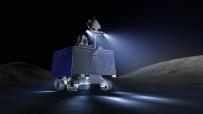
The Volatiles Investigating Polar Exploration Rover, or VIPER, is NASA’s Artemis robotic lunar rover designed to traverse the extreme environment of the South Pole of the moon in search of frozen water and other potential resources. Our robotic engineers at Johnson Space Center directly support the NASA team in VIPER systems engineering, integration and testing as well as design of structural elements, motor controllers and lights.
Artemis Spacesuit Technology Development and Validation
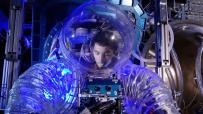
With average temperatures on the moon ranging from –298 degrees F in shadow to 224 degrees F in the sun, such a wide temperature range poses a problem for moon-walking astronauts. To address this issue, Jacobs is developing the Spacesuit Evaporation Rejection Flight Experiment (SERFE). SERFE is designed to evaluate and demonstrate newly developed active thermal control technology to protect suited astronauts from extreme temperatures.
Leveraging technology from the Artemis xEMU spacesuit development program, our team is collaborating with both NASA and commercial spacesuit providers to provide safe, durable, flexible and comfortable spacesuits for both intravehicular and extravehicular activity use on the moon.
*Above photos courtesy of NASA
Jacobs employees at multiple NASA centers, along with their NASA and industry counterparts, are committed to providing integrated solutions in support of the agency's mission and the nation's space program.
You might be interested in...
- I am Artemis: Greg Tschanz
- I am Artemis: Dan Zapata
- I am Artemis: Gwen Artis
- In the Driver’s Seat of Artemis I
- Meet the heavy vehicle drivers helping take a rocket to the moon
- How NASA keeps the 'ultimate heavy equipment running after 50 years
- Lorna Kenna: Managing the Groundwork at Kennedy Space Center for the Next Mission to the Moon

-
 News
NewsJacobs Supports Successful Completion of NASA's Artemis I Moon Mission
Jacobs congratulates NASA on the successful completion of the 25.5-day Artemis I mission to orbit the moon, following the safe splashdown of the Orion spacecraft in the Pacific Ocean.
-
 News
NewsNASA's Artemis I Moon Mission Takes Flight With Successful Launch From Kennedy Space Center
Jacobs congratulates NASA on the successful launch of the agency's Space Launch System (SLS) rocket and Orion spacecraft for the Artemis I mission, which lifted off Nov. 16 from historic Launch Pad 39B at Kennedy Space Center (KSC) in Florida.
-
 News
NewsWe Are Going: Making Artemis a Reality
Jacobs, along with NASA and industry counterparts, is committed to providing integrated solutions in support of the agency's deep space human exploration program, Artemis. Read about our support across multiple NASA Space Centers, contracts and programs.
-
 News
NewsWorking on the Team Laying the Groundwork for the Next Moon Missions: A Q&A with Jennifer Lu
She’s been inside the Crawler Transporter, on the Launch Tower and under the solid rocket boosters of Artemis I. Now, Mechanical Analysis Engineering Manager Jennifer Lu shares what it’s like to work on NASA’s Artemis Program with us in this Q&A.
-
 News
NewsQ&A: Talking with Jacobs Vice President and Deputy General Manager Dr. Lisa Monaco
Jacobs’ Vice President and Deputy General Manager of Jacobs Tidewater Operations Group (JTOG) Dr. Lisa Monaco talks career, her STEAM heroes and what it’s like to watch a night launch at NASA’s Kennedy Space Center.
-
 News
NewsQ&A: Talking with Jacobs’ NASA Johnson Space Center VP, Dr. Joy Kelly
Jacobs’ Clear Lake Group VP and General Manager at NASA Johnson Space Center Dr. Joy Kelly talks career, her STEAM journey and how we’re helping #ShapeTheWorld of human spaceflight and things like cosmic dust.
Read more news
-
_-_credit_jacobs%2c_ben_bairbf40.jpg?h=3250eaec&itok=Ex8PG-G-) News
NewsArtemis I Rolls to Launch Pad for the First Time
The Jacobs team supported NASA rolling out the Artemis I rocket from the Vehicle Assembly Building (VAB) to Launch Pad 39B at NASA's Kennedy Space Center (KSC) in preparation of final prelaunch tests of the Space Launch System (SLS). Artemis I, a flight test of the most powerful rocket NASA has ever built, will be the first mission in NASA's new deep space human exploration program, which aims to land the first woman and the first person of color on the moon and establish sustainable exploration in preparation for missions to Mars.
-
 News
NewsNASA’s Artemis I Mission: Rocket Assembly Is Complete!
Jacobs and NASA completed stacking of all Artemis I flight hardware, paving the way for future Artemis missions.
-
 News
NewsJacobs and NASA Begin Processing of Space Launch System Core Stage, Received Final Piece of Artemis I Flight Hardware
Jacobs and NASA have begun processing the Space Launch System (SLS) core stage after receiving it at Kennedy Space Center (KSC) on April 28, marking delivery of the final piece of Artemis I flight hardware to the team in Florida, a critical step in preparation for launch. The SLS rocket will send an uncrewed Orion spacecraft on a test flight around the moon and back to Earth later this year, paving the way for future Artemis missions with astronauts.
-
 News
NewsJacobs and NASA Map Critical Flight Trajectories, Lay Pathway for Safe and Reliable Missions
Space exploration vehicles traveling beyond low earth orbit can cover many millions of miles in every conceivable direction encountering gravitational forces combined with unbending laws of physics. Find out in this article how Jacobs is working with NASA to map out the orbital flight path for the upcoming Artemis I mission.
-
_newsroomaf7d.jpg?h=83ca9682&itok=-N1OUIfx) News
NewsJacobs and NASA Achieve Major Artemis I Milestone, Orion Spacecraft Ready for Launch Processing
Orion spacecraft module is turned over to Exploration Ground Systems team at Kennedy Space Center for launch processing, paving the way to send humans to the Moon, Mars and beyond. Click to read the details on this exciting milestone.
-
 News
NewsJacobs and NASA Begin Stacking of Space Launch System - Critical Step in Preparations for Artemis I Mission
First Solid Rocket Booster segment moves to Vehicle Assembly Building at KSC












2c4e.jpg?h=c7c14dee&itok=FmPI2126)


















_0ac2b.jpg?h=8a6d63f3&itok=5vsqFiQH)



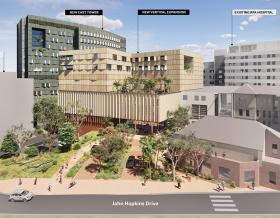





2747.png?h=1314d3d4&itok=rFs9mG95)


